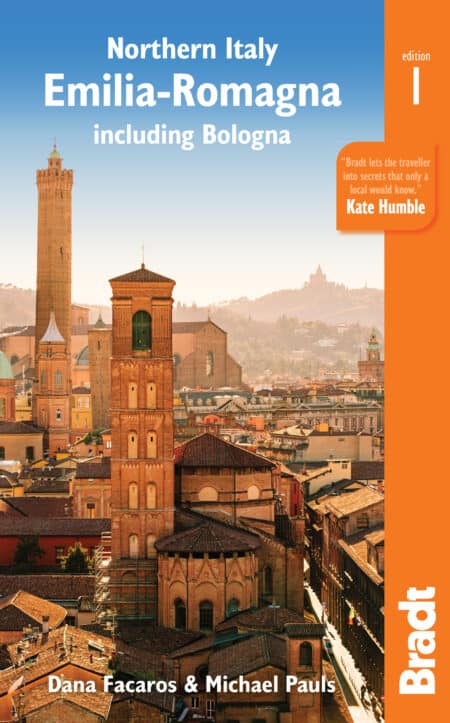The best castles in Emilia-Romagna, especially those in and around the city of Parma, are among the most striking in all of Italy. They often have lavish interiors added in or after the Renaissance, when they were converted into stately residences. Several are even said to be haunted.
Castello di Torrechiara
The most photogenic of all the duchy’s castles, this magnificent brick fantasy is almost unchanged since it was built by Pier Maria Rossi ‘Il Magnifico’ (1413–82), humanist, linguist, astronomer and military captain.
Visible from miles around, it is defended by a double set of walls and four mighty towers, each surrounded and linked by covered walkways.
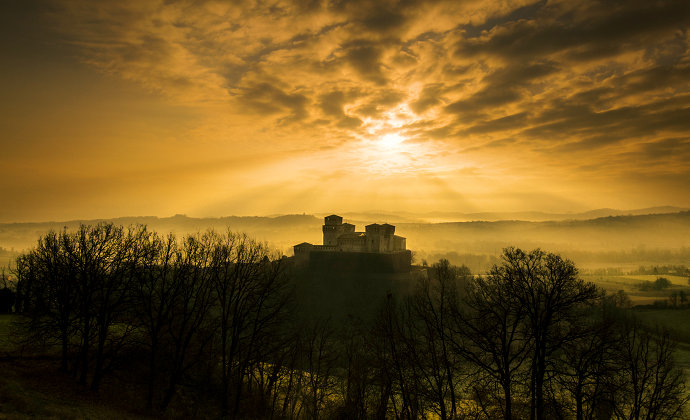
The castle’s elegant courtyard has ornate terracotta tiles. And the ground floor has excellent frescoes by Cesare Baglione. He also painted the delightful cycle of acrobats performing impossible feats with hoops on the backs of lions.
The castle’s best frescoes, however, are by Bonifacio Bembo in the beautiful Golden Bedchamber. Pier Maria brought his young lover Bianca Pellegrini here, where he died in her arms. Bembo covered the walls with gold leaf (now gone) and a fresco cycle dedicated to their love and the Rossi’s 40 other castles.
Rocca di Vignola
Castelvetro has in its centre one of the best-preserved castles in the region and thus certainly one of the best castles in Emilia-Romagna.
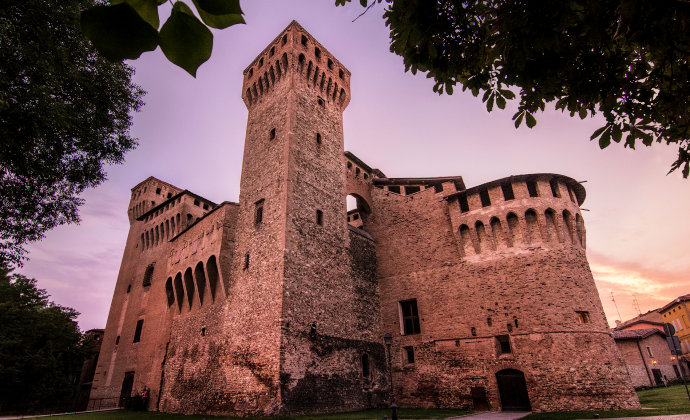
The Rocca di Vignola was founded in the 8th century by the abbots of Nonantola. It was rebuilt with lofty towers in the 13th century; and improved by the Contrari family in the 15th century. Since 1965 it has been owned by a bank, which has financed its complete restoration.
A number of rooms retain their frescoes; the chapel has frescoes by the so-called Maestro di Vignola. The castle often hosts important exhibitions and concerts.
Castello di Bardi
One of the most impressive fortifications in its locale, this 15th-century hilltop castle in the Val Ceno was a key property of the Landi. It retains beautiful beamed ceilings, 16th-century frescoes and, they say, a ghost.
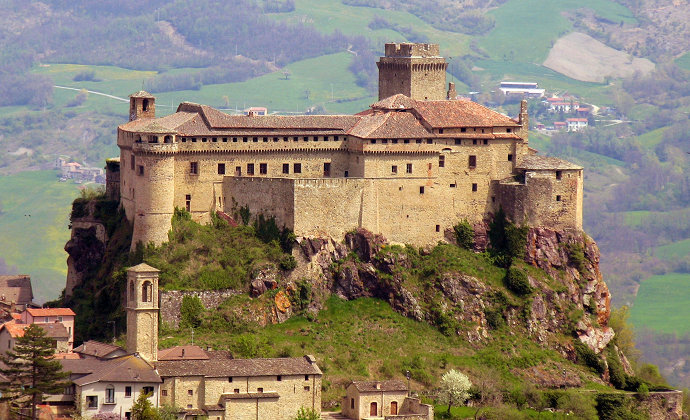
It also contains an unusual Museum of Traps and Poaching; the Museo della Civilta Valligiana with historic items from the region; and the Collezione Ferrarini-Nicoli of 60 paintings, mostly from the 20th century, all dedicated to the subject of work.
Rocca di Brisighella
This castle, built in 1310 by the Manfredi of Faenza, took its present form under the Venetian occupation of 1503–09.
In the first decade of the Wars of Italy, Venice had taken advantage of the confusion to snatch territories from all its neighbours. Almost every power in Italy, led by Pope Julius II, ganged up on her in the League of Cambrai of 1508.
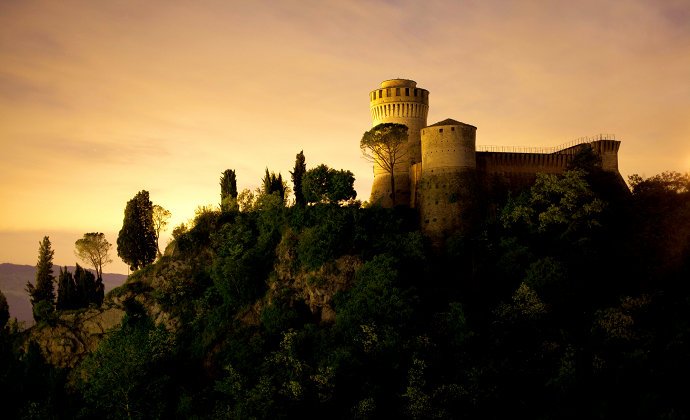
Venice was lucky to survive and keep most of its empire intact in the nine-year struggle that followed – although all the Venetian possessions in the Romagna were lost.
There are immense views from the towers over Brisighella’s tile roofs and across to the Torre dell’Orologio. The torre was built in the 1200s by Maghinardo Pagani di Susinana, signore of Imola and Faenza, who earned a mention in Dante’s Inferno and Paradiso. It was rebuilt many times since, lastly in 1850 when its unusual six-hour clock was added.
Rocchetta Mattei
A folly crowned with turrets, loggias, and bulbous, gilded neo-Moorish domes, the Rocchetta was built by Count Cesare Mattei over 20 years (1850–70) on the foundations of a ruined castle.
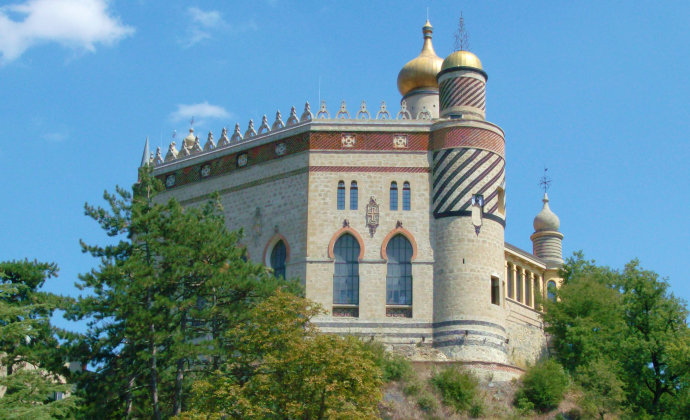
Born into a wealthy family in Bologna, Mattei (1809–96) was a founder of the Cassa di Risparmio di Bologna bank. His hobbies were alchemy and travelling. He was especially impressed with the Alhambra and the Kremlin, aspects of which he mishmashed together to create his dream castle.
He is best known, however, as the inventor of ‘electrohomeopathy’, a non-surgical cure for cancer based on the ‘natural electricity’ in plant extracts. His claims of remarkable cures attracted worldwide attention and numerous Russian aristocrats to Riola. Most doctors condemned him as a quack. Some, however, credit him with inventing placebos.
Castello di Rivalta
In a bucolic grove overlooking the Trebbia, this castle built by the Landi goes back to the 11th century. Though the whole presents a stately Renaissance aspect. Its round tower was built by an architect named Solari, who also designed parts of the Kremlin.
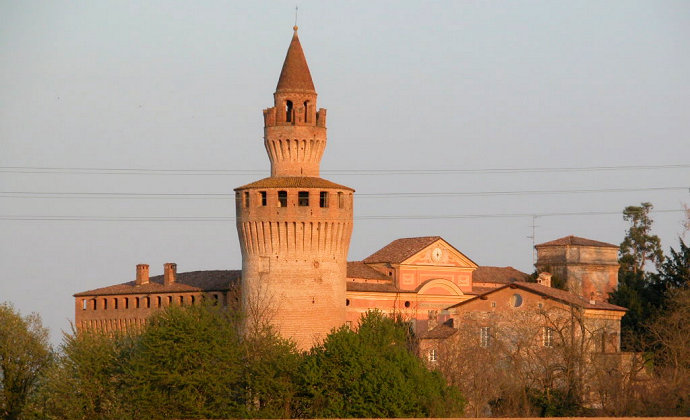
Inside are period furnishings, frescoes of country life, and a room of armour with three battle flags that were carried by the Christians at Lepanto in 1571.
When the castle is very busy, there’s a mischievous ghost of a cook named Giuseppe who likes to turn lights off and on, close doors and move the furniture around. Princess Margaret, who spent ten summers here, met him at least once.
Rocca Sforzesca
Imola’s landmark, the Rocca Sforzesca, is in the southwest corner of the old town. It owes its current refined and low-slung appearance to a 15th-century rebuilding by the Duke of Milan, Galeazzo Sforza. Parts of the earlier castle were retained inside the new walls.
The Rocca formed the model for many similar castles throughout Romagna and beyond. But it didn’t hold out for long against Cesare Borgia in 1499. Cesare had an expert on fortifications with him, a certain Leonardo da Vinci. The town plan da Vinci drew of Imola, made for improving the defences, is now at Windsor Castle.
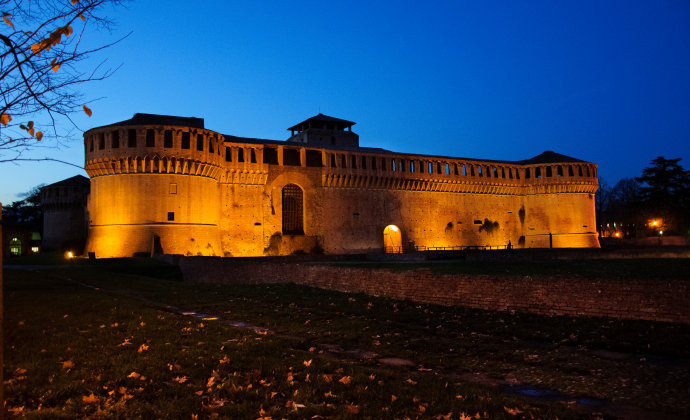
Once the popes got their hands on the Rocca, it became a prison until 1958. Now restored, it houses a museum of arms, with a notable collection of 16th-century Lombard armour and weapons. Another museum contains ceramics from the 14th–19th centuries, discovered during the castle restoration work.
Castello di Montebello
One of the best-documented phantoms in Italy haunts Torriana’s second and better-preserved castle making it easily one of the best castles in Emilia-Romagna. It was built on its steep cliff in the 12th century by Malatesta da Verucchio. The castle was given in 1464 by Pius II to the Counts di Bagno, who held on to it until the 18th century.
The ghost is named Azzurrina. She was the little albino daughter of a captain of the guard who vanished one stormy night in the late 14th century. She allegedly returns on the night of the summer solstice every five years or so to play in the castle.
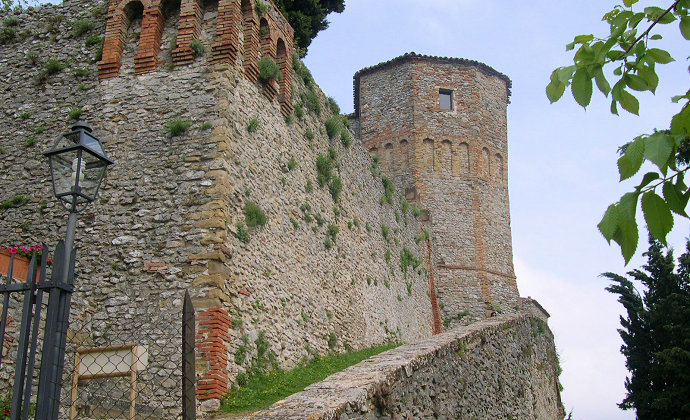
RAI (Italian State Radio and Television) spent one evening recording the sounds – a ball bouncing on the flagstones, skipping, a child’s laughter in a thunderstorm, and the bells tolling midnight. But there are no bells anywhere near the castle. At night, they play the recording to spook visitors.
Rocca di San Leo
In Roman times this tremendous pinnacle was known as Mons Feretrius, referring to Jove’s lightning (another castle, atop nearby Majolo, was blasted into ruins by a thunderbolt in the 1600s).
Mons Feretrius gave its name to Montefeltro, the old name of San Leo, and in 1158 to the ducal family who relocated to Urbino. The Malatesta seized the castle in the 14th century and added the square towers, but in 1441 Federico da Montefeltro, then aged just 19, tricked the defenders with a fake attack. In 1475 he commissioned the great Sienese fortifications architect Francesco di Giorgio Martini to replace the old fort with the most spectacular castle in Italy.
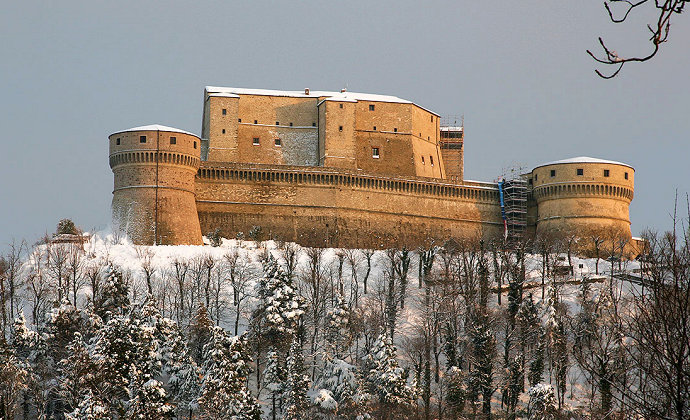
Martini’s fortress is a perfect Renaissance building: balanced, finely proportioned in its lines, a structure of intelligence and style. But it proved to be not quite as impregnable as it looks.
In 1523, after a four-month siege, the troops of Lorenzo de’ Medici the younger captured it using ropes and ladders to scale the west face of the rock. The Medici were succeeded by the delle Rovere dukes, and, when they died out, by the popes, under whom it became the escape-proof Alcatraz of its day.
Inside you can see Renaissance weapons, the dungeon, charts of various nasty tortures, modern art, a series of illustrations of Dante’s Inferno, and the cell where San Leo’s most famous prisoner, Cagliostro, spent the last years of his life.
Read more about the best castles in Emilia-Romagna
Has this story about the best castles in Emilia-Romagna inspired you to visit? Check out our guide for more information:
